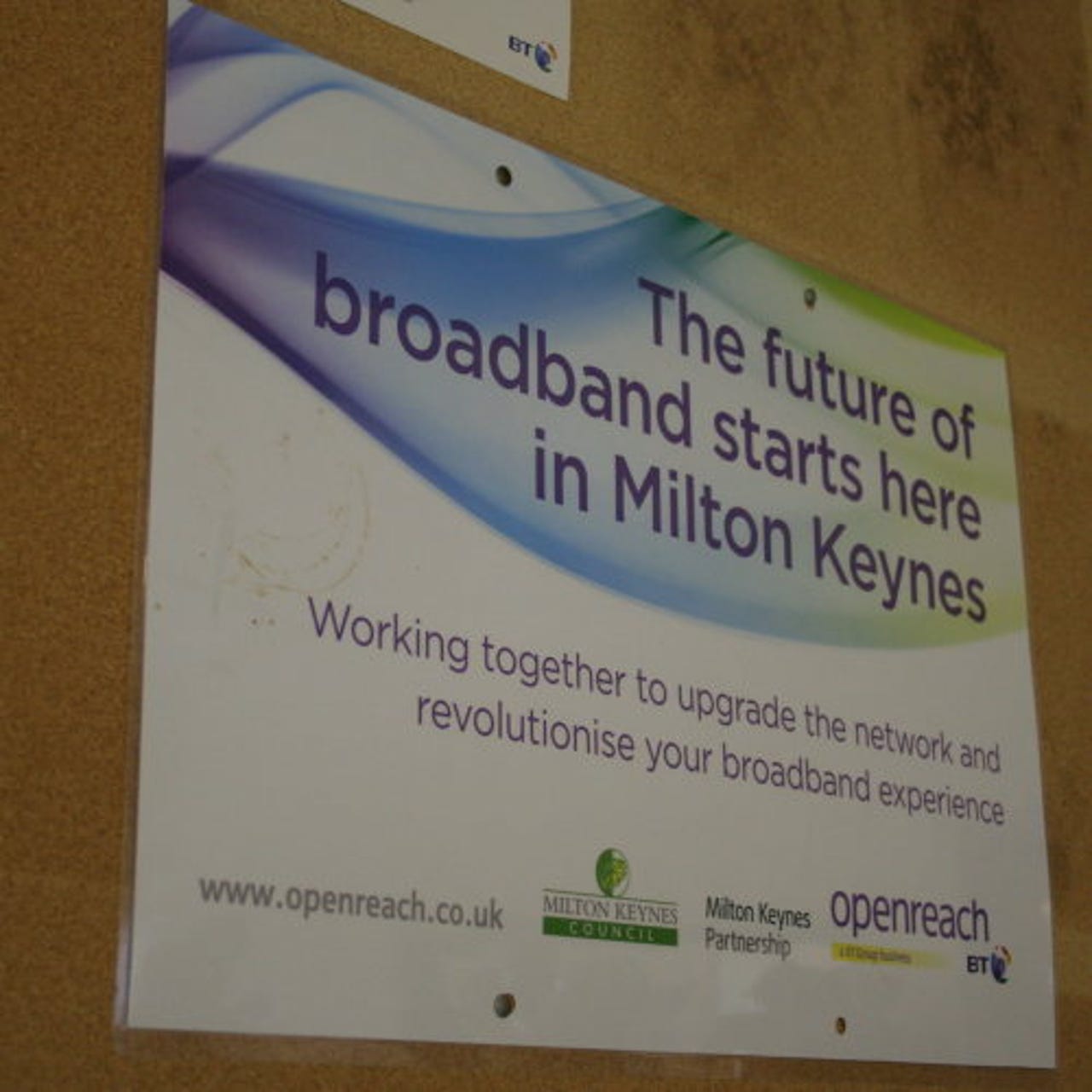Photos: Fibre broadband - BT demos splicing and blowing


How BT engineers are installing the fibre that will carry your data...
Ever wondered how high speed broadband purveyors join one bit of fibre optic cable to another? Or how they get the fibre cable from the hole in the ground to the gatepost outside your house without breaking any of it?
BT has been trialling fibre to the home broadband at its Bradwell Abbey exchange in Milton Keynes since January - one of the first such FTTH trials in the country.
The telco is ramping up its investment in fibre broadband in the UK - with a plan to spend £2.5bn by 2015 to put fibre broadband within reach of two-thirds of the nation. This breaks down into - roughly - a split of 75:25 between fibre-to-the-cabinet (FTTC) deployments and full fibre-to-the-home (FTTH) rollouts.
FTTC - which supports upload speeds of 40Mbps - requires the telco to install bigger green curbside boxes than are typically found adorning the UK's streets. But installing FTTH - which supports speeds of 100Mbps - involves many more stages as the fibre is laid much closer to the houses in the area, eventually right into the customer's premises.
In areas where BT decides to lay full fibre to the home, Openreach engineers will be spending a lot of time at the roadside blowing fibre through plastic tubes so it's within reach of people's homes and splicing the ends together and onto splitter trays. Much of the extra kit required for FTTH remains hidden underground in ducts - where the average broadband user can't see it - so engineers at BT's Bradwell Abbey exchange in Milton Keynes showed silicon.com some of the equipment and techniques BT uses to get fibre where it needs to go, including some tricks they've developed to speed up FTTH installations since starting the trial.
Blowing
Fibre optic cable is made of glass - meaning it's fragile and cannot bend beyond a certain point. To install fibre BT engineers use compressed air to blow the fibre line through a sub-duct to get it to where it needs to go.
In the picture above, resin-coated fibre cable is played out from a reel in a plastic storage pan to begin the blowing demo. Before commencing blowing, the engineers put a bead on the end of the fibre to ensure it does not get stuck during its journey through the tubes. Unbeaded fibre could snag on bends or tube connectors.
Here are two of the smaller petrol-powered compressed air machines BT uses to do fibre blowing. These machines are capable of blowing fibre at a rate of around 30 metres per minute, according to an Openreach engineer.
At the business end of the plastic tube, BT engineers wait for the fibre to be blown clear. Out in the field, engineers at each end of the blowing operation keep in touch via mobile phones to ensure "good air" is coming out of the tube.
"If we've got a leak somewhere we won't start blowing until we've got continuity," noted the engineer.
During the demo some clear plastic tubing is used to show the fibre line's progress - here the fibre bundle is shown blown right through these pieces of tube.
Finally the fibre arrives. BT engineers use mobiles to tell each other when fibre has arrived at the destination. Typically fibre blowing is always a two-man operation "for safety reasons" - however the telco has developed a gadget that can replace the need to have two engineers during blowing. The device - called 'an intelligent air stay' - is put on the end of the tube and will send a text message to the engineer when the fibre is approaching.
"It's improved efficiency - so where there were two people you'll be able to have one," the engineer said.
With the fibre in place, the next job for engineers involves splicing fibres together so they can be terminated onto splitter trays.
The fibre bundle actually contains four resin-coated fibre threads, shown being separated above.
Splicing
Gluing fibres together to join them just doesn't cut it anymore - though the BT engineer says glue was used in the mid-1980s for the earliest fibre installations in the UK. Now higher tech methods have been developed to ensure the FTTH lines can support the headline upload speeds of 100Mbps - specifically a technique known as the fusion splice.
First up the coloured coating on the fibre strands is stripped away with dedicated strippers, as shown above.
Next the freshly revealed fibre is cleaned of any residue with isopropyl alcohol - swab with a wipe until you hear it squeak, the BT engineer told silicon.com.
The small metal box pictured on the left is a cleaver: a fibre cutting tool capable of precision slicing a fibre strand to "a nice square end", according to the engineer. The ends of the cut fibre need to be square to ensure a high quality splice. "If we have a bad splice we lose signal," the engineer said. "The splice is the most critical thing on the network."
The yellow plastic tub at the back of the photo is the engineer's "sin bin" for safely collecting splinters of cut fibre which might otherwise end up in his or her thumb. "If you get it in your finger believe you me it hurts - and it's a job to get it out," he said.
Here silicon.com's intern Shelley Portet has a go at using the splicing machine to fuse the two pieces of fibre under the watchful eye of BT's engineer.
The splicing machine - pictured in the centre - uses electricity to fuse the threads of fibre together. Here the display is indicating the cut is not good enough so needs to be redone.
After re-cutting the engineer points to the improved cut meaning the fusing can now take place. "You press the set [button] and you'll see it arc together, fuse the glass," he said.
Seconds later the splicing is complete.
Here the BT engineer indicates the 'loss rating' estimate for the splice on the machine's display. The machine rates the loss by looking across the splice, rather than down the fibre, as an OTDR (optical time-domain reflectometer) would. "It's only a rough estimation but in general terms they're pretty accurate," he added.
And finally the freshly joined fibre. The splicing machine is also used to heat-shrink a plastic sleeve (pictured above) over the join for added strength and stability.